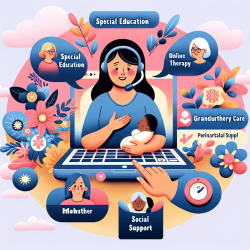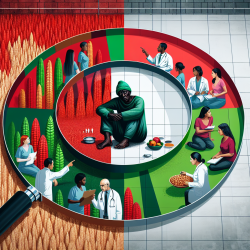Introduction
The realm of pediatric intensive care units (PICUs) is a critical area where evidence-based practices can significantly enhance patient outcomes. A recent study titled "Mobilization practices in critically ill children: a European point prevalence study (EU PARK-PICU)" provides pivotal insights into the current mobilization practices in European PICUs. This blog aims to distill the findings of this study and offer practical recommendations for practitioners seeking to improve their mobilization strategies for critically ill children.
Key Findings from the EU PARK-PICU Study
The study involved 456 children across 38 PICUs in 15 European countries, revealing a 39% prevalence of physical therapy (PT) and/or occupational therapy (OT)-provided mobility activities. Notably, family presence was strongly associated with out-of-bed mobilization, while invasive mechanical ventilation was negatively associated with mobility. Barriers such as cardiovascular instability and oversedation were reported on 38% of patient days.
- 39% of children received PT/OT-provided mobility activities.
- Family presence increased the likelihood of out-of-bed mobilization (aOR 7.83).
- Invasive mechanical ventilation decreased the likelihood of mobility (aOR 0.28).
- Barriers to mobilization were present on 38% of patient days, with cardiovascular instability and oversedation being the most common.
Implications for Practice
The findings underscore the need for a systematic, interdisciplinary approach to mobilization in PICUs. Here are several recommendations based on the study:
- Interdisciplinary Collaboration: Encourage collaboration between nurses, PTs, OTs, and family members to create a supportive environment for mobilization.
- Family Involvement: Actively involve family members in the mobilization process to enhance out-of-bed activities and support the child emotionally.
- Addressing Barriers: Implement strategies to overcome barriers such as cardiovascular instability and oversedation by closely monitoring and adjusting care plans.
- Protocol Development: Develop and implement unit-based mobilization protocols to standardize practices and ensure consistent application across different PICUs.
Encouraging Further Research
While the EU PARK-PICU study provides valuable insights, there is a need for further research to explore the long-term impacts of early mobilization and rehabilitation programs in critically ill children. Practitioners are encouraged to contribute to this growing body of research by implementing evidence-based practices and sharing outcomes.
Conclusion
The EU PARK-PICU study highlights significant opportunities for improving mobilization practices in PICUs. By fostering interdisciplinary collaboration, involving families, and addressing barriers, practitioners can enhance the quality of care for critically ill children. For a more comprehensive understanding, practitioners are encouraged to delve into the original research paper.
To read the original research paper, please follow this link: Mobilization practices in critically ill children: a European point prevalence study (EU PARK-PICU).










